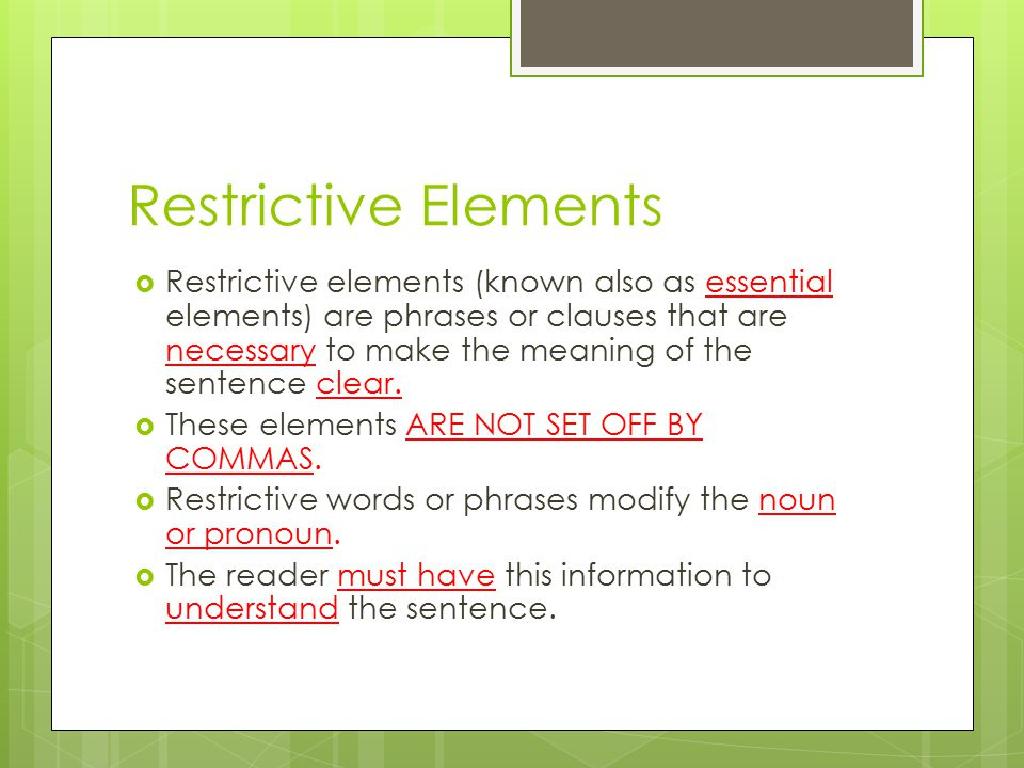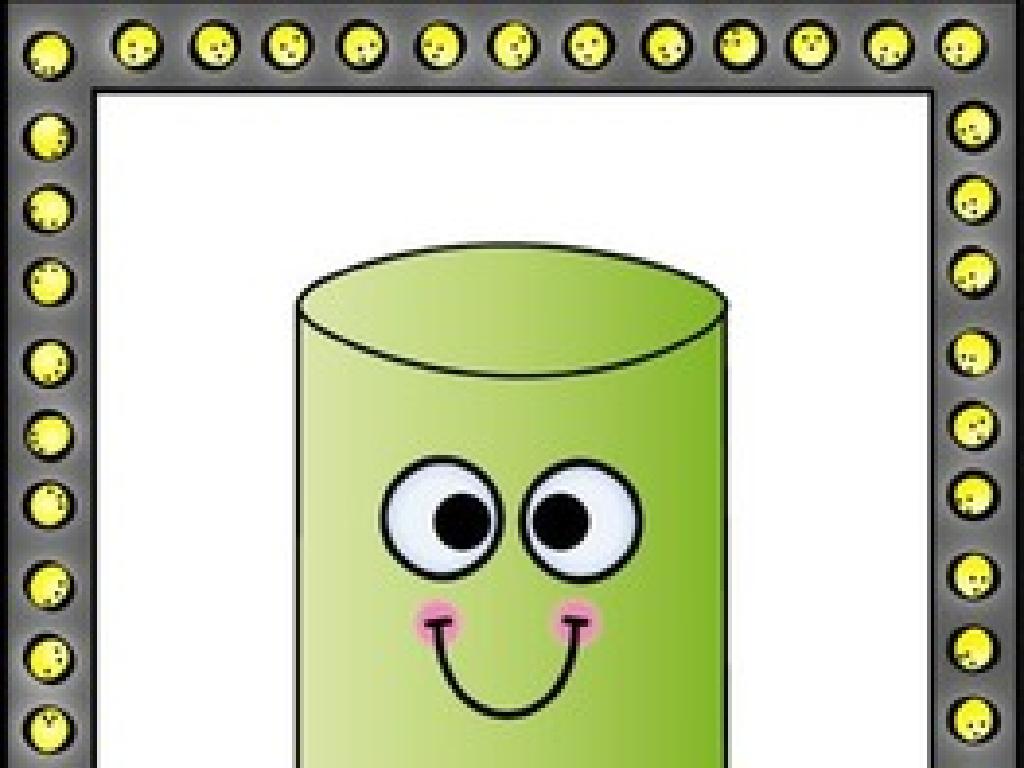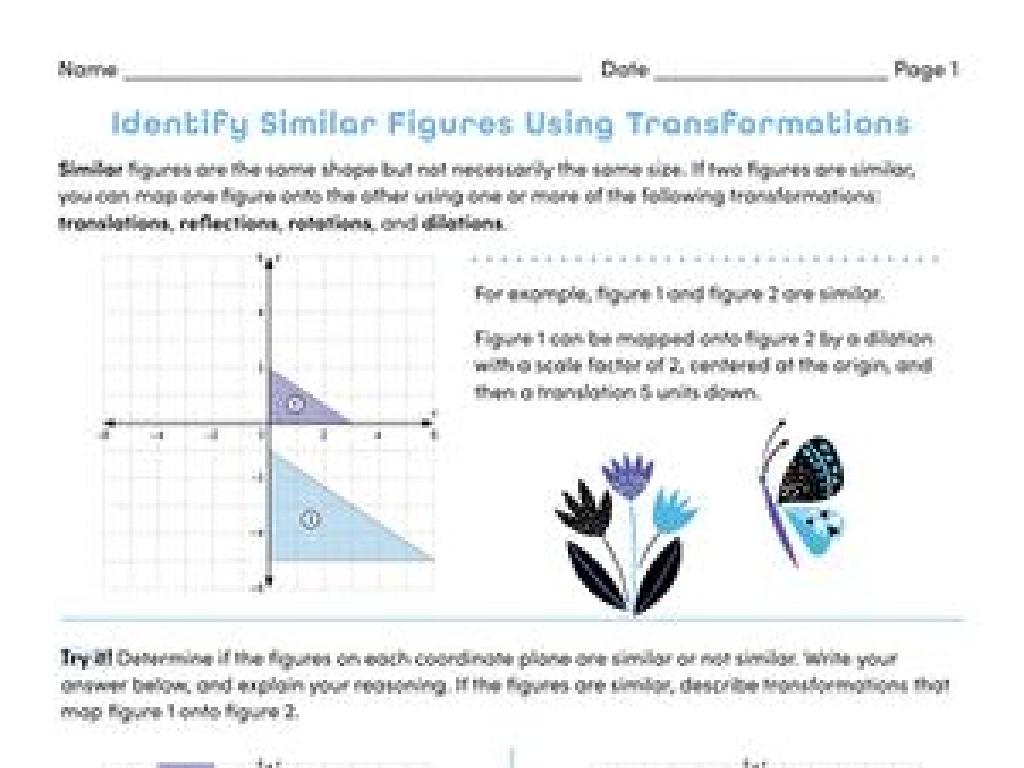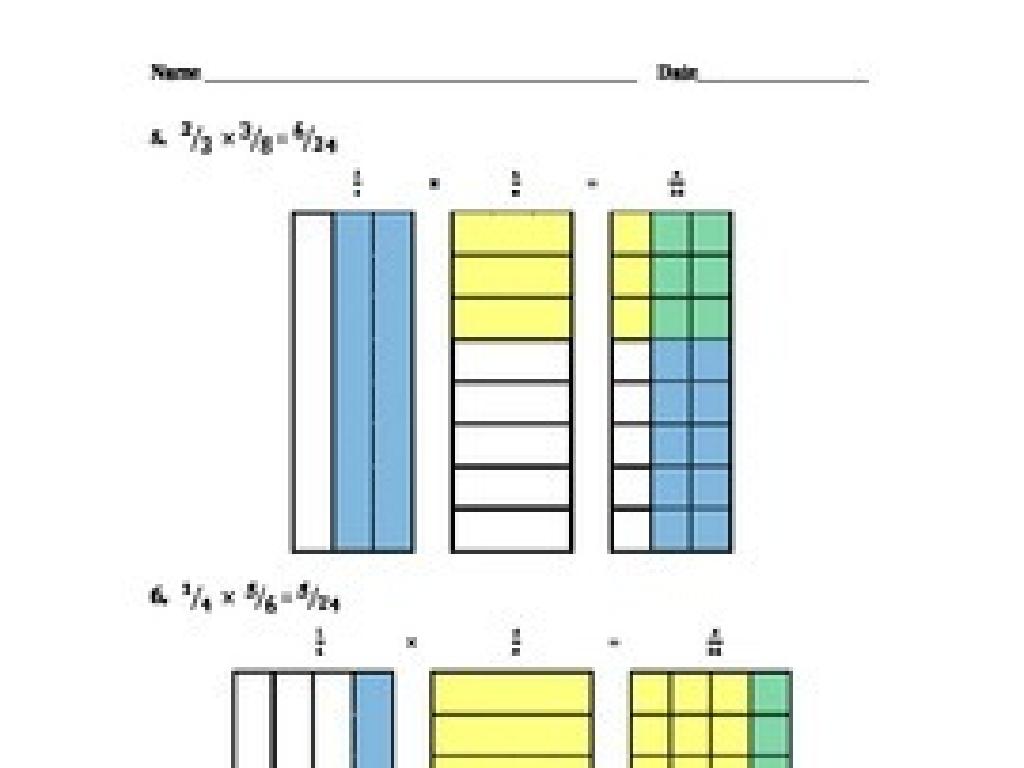Subtract Fractions With Like Denominators Using Area Models
Subject: Math
Grade: Fourth grade
Topic: Understand Fraction Addition And Subtraction
Please LOG IN to download the presentation. Access is available to registered users only.
View More Content
Subtracting Fractions with Like Denominators
– Fractions represent parts of a whole
– Like denominators: same bottom number
– Denominators are the same, like 1/4 and 3/4
– Subtracting fractions with same denominators
– Take away parts from the same whole, e.g., 3/4 – 1/4
– Using area models for subtraction
– Draw shapes divided into equal parts to visualize subtraction
|
Begin the lesson by reinforcing the concept that fractions are parts of a whole, which will help students understand the process of subtraction. Review the term ‘like denominators’ to ensure students recognize that it refers to fractions that have the same bottom number. Explain that when subtracting fractions with like denominators, we only subtract the numerators (top numbers) as the denominators remain the same. Introduce area models as a visual tool to help students see how one part is taken away from another. For example, if you have a shape divided into 4 equal parts (quarters), and you shade 3 parts (3/4), then erase one part (1/4), you are left with 2/4. This visual representation will aid in their understanding of the concept.
Understanding Fractions: Parts of a Whole
– A fraction shows part of a whole
– Numerator over denominator
– Top number is parts we have, bottom is total parts
– Example: 1/4 is one out of four
– Like a pizza cut into 4 pieces, we have 1
– Area models visually represent fractions
– Draw a shape, divide into equal parts, shade the fraction
|
Begin with the basic definition of a fraction to ensure students understand that it represents a part of a whole. Explain the terms numerator and denominator, using everyday examples like slices of pizza to illustrate the concept. Show an example of a fraction, such as 1/4, and use an area model to visually demonstrate how fractions can be represented. Area models are a great tool for visual learners and can help solidify the concept of fractions as parts of a whole. Encourage students to draw their own area models to represent different fractions.
Subtracting Fractions with Like Denominators
– Understanding like denominators
– Denominators that are the same, e.g., 8 in 3/8 and 5/8
– Equal parts of a whole
– They show the total number of equal parts
– Example: Subtracting 3/8 from 5/8
– 5/8 – 3/8 = 2/8, both fractions are out of 8 parts
– Visualizing with area models
– Area models help us see the parts we subtract
|
This slide introduces the concept of like denominators as a foundation for subtracting fractions. Emphasize that like denominators mean the fractions are divided into the same number of equal parts, making it easier to subtract. Use the example of 3/8 and 5/8 to show that since both fractions are out of 8, we can directly subtract the numerators. Introduce area models as a visual tool to help students see the subtraction process. For instance, if we have two shapes divided into 8 equal parts, and we shade 5/8 on one and 3/8 on the other, subtracting would mean unshading 3 parts from the 5, leaving us with 2/8. Encourage students to draw their own area models for practice.
Visualizing Fractions with Area Models
– Area models clarify fractions
– Models divided into equal parts
– Imagine a chocolate bar split into equal squares
– Shaded parts represent the fraction
– If 6 out of 8 squares are shaded, it represents 6/8 of the bar
– Subtracting fractions using models
– To subtract, unshade the number of parts you’re taking away
|
Area models are a visual tool that help students understand fractions by breaking a whole into equal parts. This slide introduces the concept of using area models to represent fractions. Each model, such as a rectangle, is divided into equal sections to represent the denominator. The shaded sections represent the numerator, showing how much of the whole is being considered. When subtracting fractions with like denominators, students can visually remove the shaded parts corresponding to the fraction being subtracted. This method reinforces the concept that fractions are parts of a whole and aids in understanding subtraction of fractions. Encourage students to draw their own area models and practice shading and unshading parts to represent subtraction.
Subtracting Fractions Using Area Models
– Shade fractions to subtract
– If you have 3/4 and you subtract 1/4, shade 3 parts out of 4.
– Unshade the subtracted fraction
– Now, unshade 1 of the 3 shaded parts.
– Remaining shaded part is the answer
– The part still shaded, 2/4, is your answer.
|
This slide is designed to visually demonstrate the process of subtracting fractions with like denominators using area models. Start by explaining that an area model is a visual representation that helps us see the fractions. When subtracting, we first shade the total fraction we have. Then, we unshade the fraction we want to subtract. What remains shaded represents the answer to our subtraction problem. Use an example like subtracting 1/4 from 3/4. After shading three parts to represent 3/4, we unshade one part, leaving us with 2/4, which simplifies to 1/2. This method helps students understand subtraction of fractions in a concrete way. Encourage students to draw their own area models and practice with different fractions.
Subtracting Fractions with Area Models
– Example: 5/8 – 2/8 using an area model
– Start with 5/8 shaded, we need to take away 2/8
– Shade 5/8 of the model
– Carefully shade over five parts out of eight
– Unshade 2/8 of the model
– Now, erase or unshade two of the five shaded parts
– Count remaining shaded parts
– What fraction is still shaded? That’s our answer!
|
This slide is an interactive class activity to help students understand how to subtract fractions with like denominators using area models. Begin by explaining the example problem: subtracting 2/8 from 5/8. Demonstrate shading 5/8 of an area model on the board, then unshading 2/8 of it to visually represent the subtraction process. Guide the students to count the remaining shaded parts to find the answer, which should be 3/8. Encourage students to draw their own area models and practice with different fractions. This visual method helps solidify the concept of fraction subtraction by providing a concrete representation of the abstract process.
Your Turn to Try: Subtracting Fractions
– Activity: Subtract 3/6 from 4/6
– Use the area model for subtraction
– Shade 4/6, then unshade 3/6 to find the difference
– Share your answer with the class
– Explain how you got your answer
– Discuss the steps you took using the model
|
This activity is designed to help students understand the concept of subtracting fractions with like denominators through a visual method. Provide each student with a blank area model divided into six equal parts. Students will shade in 4/6 of the model, then unshade 3/6 to visually see the subtraction process. After completing the activity, students will share their final shaded area model and explain the steps they took to arrive at their answer. This reinforces their understanding and allows them to articulate the process of subtraction using fractions. Possible variations for different students could include using different fractions with like denominators or providing models with different numbers of equal parts.
Class Activity: Fraction Art
– Create area models on grid paper
– Subtract fractions with same denominators
– Example: 3/4 – 1/4 = 2/4 or 1/2
– Color your models for art
– Use different colors to show subtracted parts
– Share your fraction art with the class
|
This activity is designed to help students understand the concept of subtracting fractions with like denominators through a hands-on art project. Provide each student with grid paper and ask them to draw area models representing fractions with the same denominators. Then, guide them to color in the fractions and subtract one from another by coloring over the part that is subtracted. This visual representation will help solidify their understanding of the concept. Encourage creativity and allow students to share their art pieces with the class to foster a collaborative learning environment. Possible variations of the activity could include subtracting different sets of fractions, using the art to create a story, or even a group project where each student contributes a piece to a larger fraction art mural.
Conclusion: Subtracting Fractions with Area Models
– Visualize fraction subtraction
– Picture each fraction as part of a whole to see what you take away.
– Area models clarify subtraction
– Draw boxes to represent wholes, shade parts to subtract.
– Practice with various fractions
– Try subtracting fractions like 3/4 – 1/4, 5/8 – 3/8.
– Mastery through repetition
|
As we wrap up, remember that subtracting fractions with like denominators is made easier by visualizing the process. Area models are excellent tools for this, as they allow students to see the fractions as parts of a whole and understand what it means to take a portion away. Encourage students to practice with a variety of fractions to become comfortable with the concept. Repetition will help solidify their understanding and ability to subtract fractions effectively. For homework, assign several problems that require students to draw area models and subtract fractions with like denominators.





